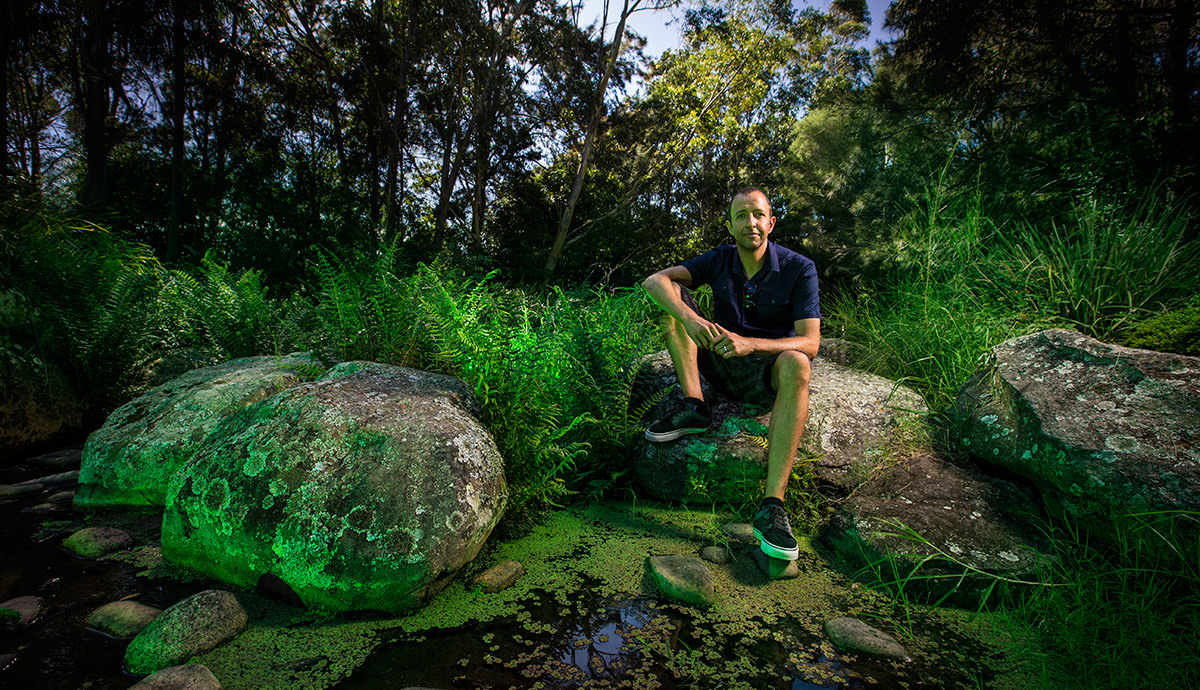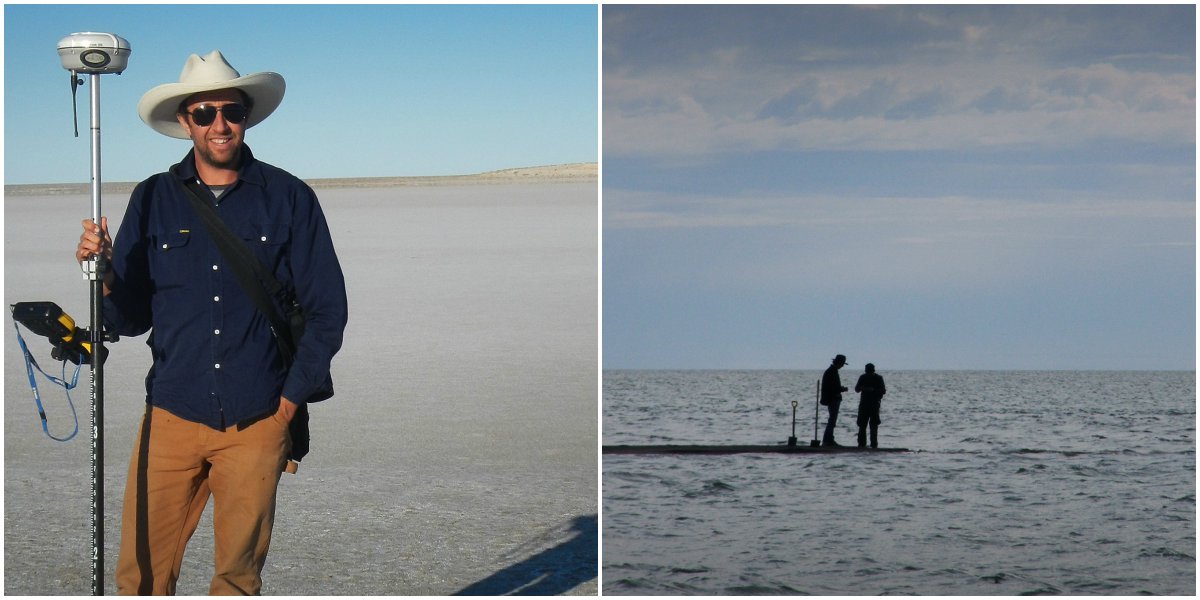February 23, 2015
Drying megalakes may have contributed to megafauna extinction
New research finds ancient inland lake system was 700 times bigger than Sydney Harbour.

New research suggests major hydrological transformation and subsequent drying of Australia’s vast network of megalakes may have contributed to the extinction of Australia’s megafauna.
The research, led by Dr Tim Cohen (pictured above and below), from UOW's School of Earth and Environmental Sciences, provides a robust account of what climate was like in the critical juncture when humans first arrived on the continent from South East Asia and some of the megafauna became extinct, between 40-60,000 year ago.
The debate about what exactly caused the extinction of megafauna has been a controversial one. It has been suggested by some that the megafauna may have been driven to extinction by the fire-wielding practices of the first Australians that drastically altered the environment of an already comparatively dry continent.
This theory was supported because climate at the time of extinction was seen to have been essentially stable. However, the new research, published in the March issue of the journal Geology, reveals that prior to about 48,000 years ago much of the arid interior was a very different place.
“Our results show that the critical extinction window was a time of major hydro-climatic change in which previously overflowing megalakes vanished from central Australia,” Dr Cohen said.
His team excavated old shorelines – old beaches that formed when the lake was higher. These old beaches lay 20-25 metres above the floor of the modern Lake Eyre and represent a period in Australia’s history of hydrological plenty; a time in arid central Australia of giant wombats and kangaroos, predatory reptiles and the large flightless bird, Genyornis newtoni.

The team then dated the sediment samples at UOW’s Centre of Archaeological Sciences optically stimulated luminescence (OSL) laboratory, and reconstructed past lake water volumes and required flow input from the 1000 kilometre long rivers that drain to the now arid interior.
They found that Australia went from a land of megalakes, complete with megafauna, to the dry interior more like what we see today.
“Today’s salt-crusted landscape would have had water up to 25 metres deep and a volume of 380 cubic kilometres. That’s 700 times that of Sydney Harbour with an area more than 25,000 square kilometres,” Dr Cohen said.
“To put the scale of this water body in context, if present today it would join the top ten lakes in the world for aerial coverage and represent an order of magnitude greater volume than is achievable in today’s climate.”
Dr Cohen said much of the past debate on the potential role of humans or climate in the extinction of megafauna has often assumed a stable climate.
“This research is therefore pivotal as it shows for a very large area of the Australian continent that the period in question was one of increasing hydrological variability. Suggesting that climate change played no role in this major biophysical event can no longer be sustained and whether humans played any significant role is yet to be demonstrated,” Dr Cohen said.
Dr Cohen and his team will now investigate the causes of these continental-scale changes in climate, as well as how increased climatic variability can impact landscapes and ecosystems.
Media contact: Elise Pitt, Media & PR Officer, +61 2 4221 3079, +61 422 959 959 or epitt@uow.edu.au.


